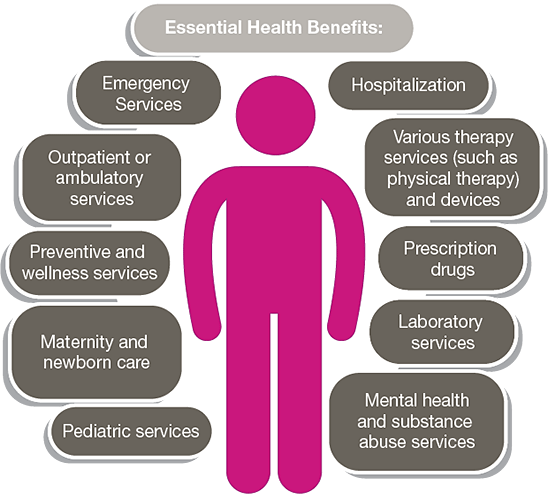The Greatest Guide To Medicare Advantage Agent
Table of ContentsTop Guidelines Of Medicare Advantage AgentNot known Facts About Medicare Advantage AgentMedicare Advantage Agent for Beginners


follows from adheres to the perplexing young age profile of account uninsured with the better health, wellness average, of younger personsMore youthful For those without access to work environment wellness insurance coverage, bad health is a prospective obstacle to acquiring nongroup protection because such protection might be highly valued, exclude preexisting conditions, or be just unavailable. Unless otherwise noted, nationwide quotes of people without health and wellness insurance policy and percentages of the population with different kinds of protection are based on the CPS, the most extensively used source of price quotes of insurance coverage and uninsurance prices.

How Medicare Advantage Agent can Save You Time, Stress, and Money.
The connection between health insurance and access to care is well established, as recorded later on in this chapter. The partnership in between wellness insurance coverage and health results is neither straight neither simple, a comprehensive scientific and health and wellness solutions research literature web links health insurance protection
to improved access accessibility care, better much betterTop quality and improved boosted individual population populace health and wellnessStanding The 2nd report, on personal health outcomes for uninsured adults, is stood for by the innermost circle of the number, while the 3rd record, on family members health, includes the topics of the 2nd report however stresses a different system of analysis, particularly, the family.
Moreover, it concentrates especially on those with no medical insurance for any type of length of time. The issues faced by the underinsured remain in some aspects similar to those faced by the uninsured, although they are typically less serious. Uninsurance and underinsurance, however, include noticeably different policy problems, and the methods for addressing them might differ. Throughout this study and the 5 reports to comply with, the primary focus gets on persons without any wellness insurance coverage and thus no support in spending for wellness care beyond what is available through charity and safeguard organizations. Health insurance policy is an effective variable affecting invoice of treatment because both clients and medical professionals react to the out-of-pocket cost of services. Medical insurance, nonetheless, is neither required nor sufficient to get to medical services. Nonetheless, the independent and direct effect of health
insurance protection on access to wellness solutions is well developed. Others will certainly acquire the health treatment they need even without wellness insurance coverage, by paying for it out of pocket or seeking it from service providers who use care cost-free or at very subsidized prices. For still others, medical insurance alone does not make certain invoice of care as a result of other nonfinancial barriers, such as a lack of wellness care carriers in their neighborhood, limited accessibility to transport, illiteracy, or linguistic and social distinctions. Formal research concerning uninsured populations in the USA dates to the late 1920s and very early 1930s when the Committee on the Cost of Healthcare generated a series of records concerning funding physician workplace check outs and hospitalizations. This problem ended up being salient as the numbers of medically indigent climbed during the Great Clinical depression. Empirical researches regularly sustain the link in between access to care and enhanced health outcomes(Bindman et al., 1995; Starfield, 1995 ). Having a regular source of care can be considered a forecaster of accessibility, instead of a direct measure of it, when health and wellness end results are themselves used as access signs. This extension of the concept of access dimension was made by the IOM Board on Monitoring Access to Personal Wellness Treatment Services(Millman, 1993, p. Whether or not moms and dads are guaranteed shows up to affect whether their children obtain treatment in addition to just how much careeven if the kids themselves have protection(Hanson, 1998). The health of parents can impact their ability to take care of their kids and the level of check here household tension. Bothering with their youngsters's access to care is itself a resource of anxiety for moms and dads. Three chapters adhere to in this record. Phase 2 gives an introduction of exactly how employment-based medical insurance, public programs and private insurance plan operate and communicate to offer comprehensive but insufficient coverage of the united you can try this out state population. This consists of a review of historical trends and public policies impacting both public and private insurance policy, a conversation of the communications amongst the various kinds of insurance, and an exam of why individuals move from one program to another or end up
